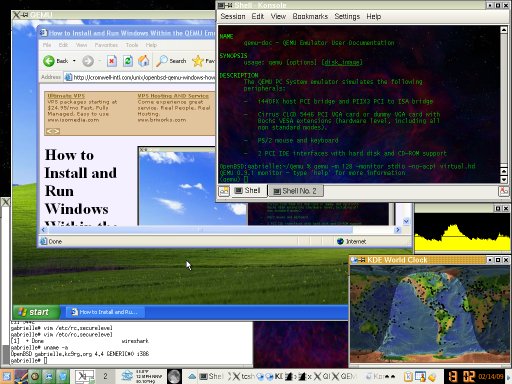
Optionally, to start an SMP guest, one could use something like: drive id=MacHDD,if=none,file=./mac_hdd.img \ device ide-drive,bus=ide.2,drive=MacHDD \ device isa-applesmc,osk="insert-real-64-char-OSK-string-here" \
#Mac os x 10.0 on qemu mac os x
To start your Mac OS X guest in QEMU, use the following command line:īin/qemu-system-x86_64 -enable-kvm -m 2048 \ Once the above components are in place, you'll need a HDD image for your Mac OS X guest:Īs of Yosemite (OS X 10.10), on kernels older than 4.7, we need to tell KVM to ignore unhandled MSR accesses (During boot, Yosemite attempts to read from MSR 0x199, which is related to CPU frequency scaling, and is clearly not applicable to a VM guest):Įcho 1 > /sys/module/kvm/parameters/ignore_msrs Source is available from the project's SVN repo, but since it requires Mac OS X and Xcode to build, I've uploaded a binary image which you may use until you're ready to build your own.
#Mac os x 10.0 on qemu install
This contains and installs an appropriately patched SeaBIOS binary as well, so there's no longer a need to download, build, and install a separate instance of SeaBIOS. Then, as root, while still in the kvm-kmod directory (substitute kvm_amd for kvm_intel, depending on your CPU):Ĭp.

Right now, I have 3.15.86_64 on my Fedora 20 machine, and everything works out of the box.įor older kernels, it may be possible to build KVM kernel modules using the kvm-kmod "wrapper", by following these instructions.


OK, here's what you'll need (or skip to the technical details instead): Somloįeedback to: somlo at cmu dot edu 0. Running Mac OS X as a QEMU/KVM Guest Gabriel L.


 0 kommentar(er)
0 kommentar(er)
